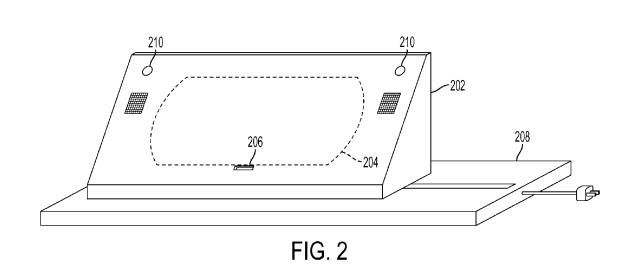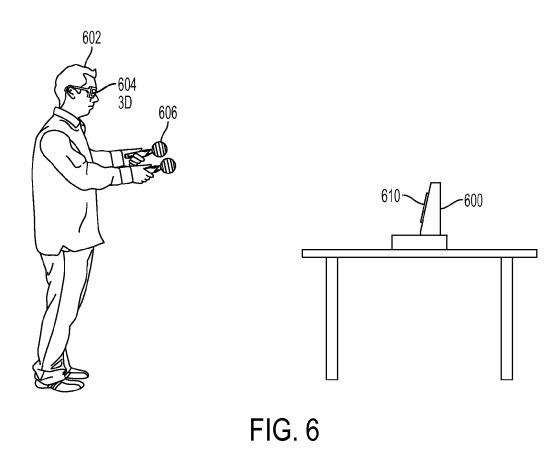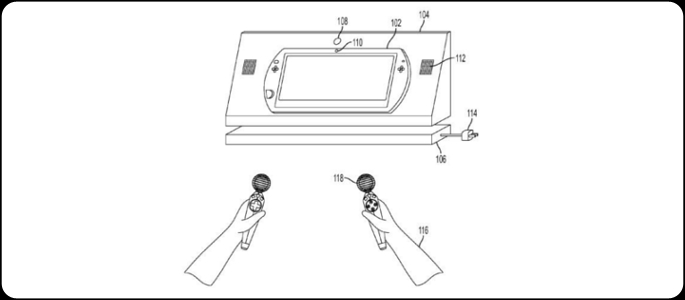Wouldn’t it be better if the PlayStation Move could be used on the move? A recently published patent from SCEA suggests that the company may indeed be planning to make the Move compatible with the NGP and PSP.
While the Move has been relatively successful, a weak library of games and less marketing than Kinect has firmly placed it behind Microsoft’s camera and Nintendo’s WiiMote. One thing that could possibly help breathe life into the sub-platform (other than more news on Sorcery) would be to bring it to another platform – the 64 million selling PSP, or the upcoming NGP. Originally filed back in 2009, but only just published, the patent is titled “Portable Device Interaction Via Motion Sensitive Controller”.
Mobile gaming platforms are designed for playing games without the need to be attached to a display or a power source. Examples mobile gaming platforms include Sony PlayStation Portable (PSP) and PSP Go. Additionally, other devices whose main function is other than playing games can also provide mobile gaming functionality, such as cell phones, Personal Digital Assistants (PDA), MP3 players, etc. Online gaming is also possible, wherein a user can interactively play against or with other users over the Internet.
As game complexity continues to intrigue players, gaming software and hardware manufacturers have continued to innovate to enable additional interactivity. In reality, however, the way in which users interact with a game has not changed dramatically over the years. Commonly, users still play computer games using hand held controllers or interact with programs using mouse pointing devices. Portable gaming devices that have gyro and position sensing capabilities are often twisted and turned during game play to accommodate a user interface for the game. However, it is uncomfortable for the user to visually track the screen unless the user moves his head in the same direction as the twisting and turning of the gaming device. This is not often possible, resulting in poor gaming experiences.
As game complexity continues to intrigue players, game and hardware manufacturers have continued to innovate to enable additional interactivity and computer programs. A growing trend in the computer gaming industry is to develop games that increase the interaction between user and the gaming system. One way of accomplishing a richer interactive experience is to use wireless game controllers whose movement is tracked by the gaming system in order to track the player’s movements and use these movements as inputs for the game. Generally speaking, gesture input refers to having an electronic device such as a computing system, video game console, smart appliance, etc., react to some gesture captured by a video camera that tracks an object.
Interestingly, the patent covers several ways in which the portable gaming system could track the Move. Some use a camera inbuilt onto the device – something the NGP has, but the PSP does not – whereas others show a stand that has its own camera. The stand could even move of its own accord:
Embodiments of the present invention provide methods, systems, and computer programs for methods, systems, and programs for wireless interaction with a portable device. In one embodiment, a method operation establishes a communications link between the portable device and the stand. The stand tracks the motion of an input device within an interactivity zone. In another method operation, the portable device interfaces with the input device to generate actions associated with game objects in the portable device, where the interface takes place when the input device is in or near the interactivity zone. Additionally, the stand moves when the tracking detects that the input device is outside predefined boundaries near an edge of the interactivity zone. The stand movement information is transferred via the communications link to update the location of the interactivity zone.
In this case the patent even shows 2 different cameras (210), to allow for a 3D image:
 One picture even goes as far as to show someone using 3D glasses on the portable device, but this may simply be for illustrative purposes to show what the Move-NGP combo could possibly do.
One picture even goes as far as to show someone using 3D glasses on the portable device, but this may simply be for illustrative purposes to show what the Move-NGP combo could possibly do.
 We’re obviously very skeptical about whether this patent will ever see the light of day, but it does at least provide a very interesting concept. As the creator’s on the EyeToy, Sony were one of the first companies to develop camera based entertainment, and are still trying to push the boundaries of what augmented technology can do.
We’re obviously very skeptical about whether this patent will ever see the light of day, but it does at least provide a very interesting concept. As the creator’s on the EyeToy, Sony were one of the first companies to develop camera based entertainment, and are still trying to push the boundaries of what augmented technology can do.
Would you like to use your Move on the NGP? Or is the screen size simply too small? Share your thoughts in the comments below.








